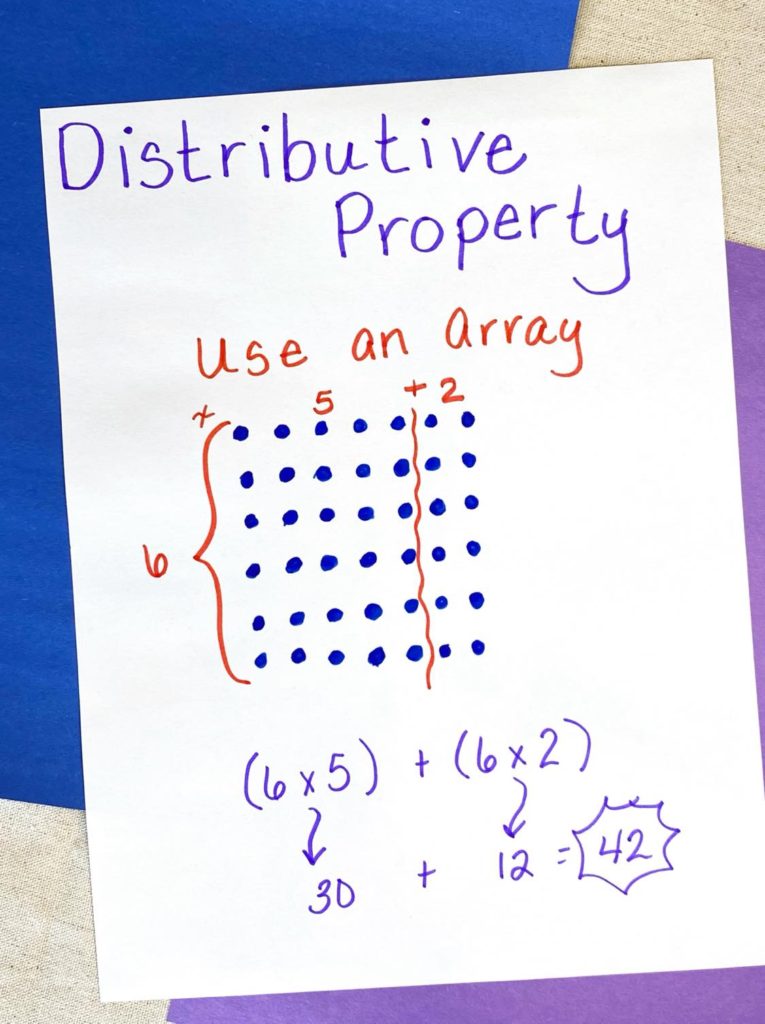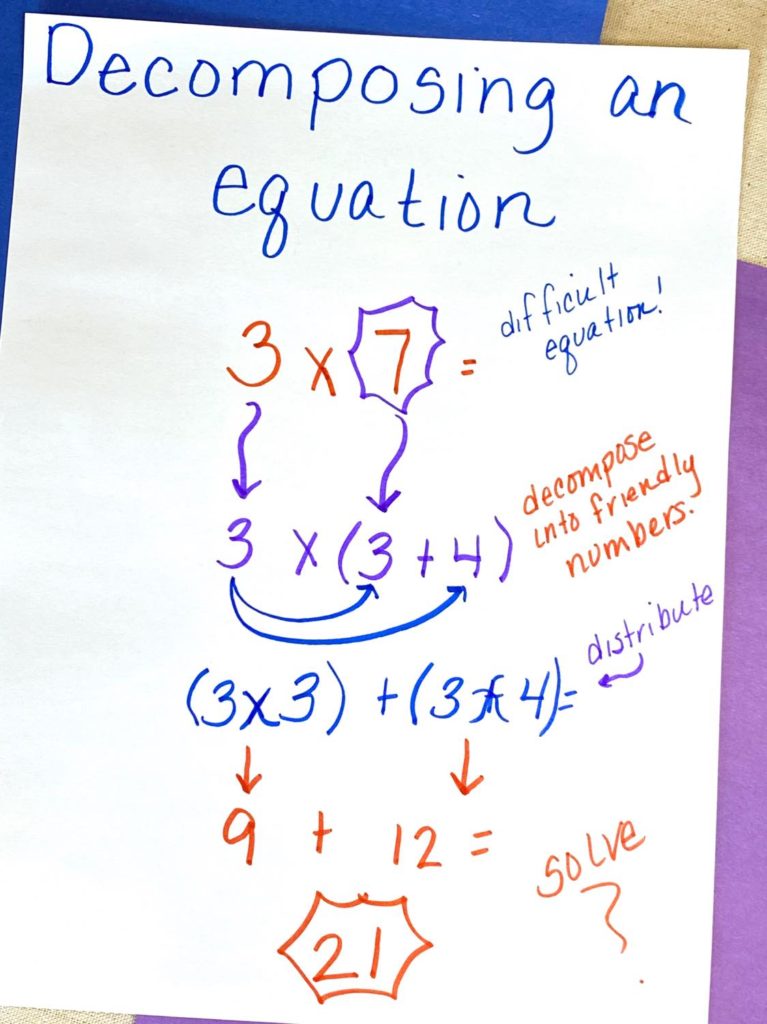Looking for a way to teach or reteach the Distributive Property of Multiplication to your upper elementary students? Read on to learn how I teach this essential math skill.
Why Teach the Distrbutive Property of Multiplication?
As a fifth-grade teacher, I often had students come to me without the skills necessary to solve more complex multiplication equations. I was so frustrated! I had to do something!
Enter teaching the Distributive Property of Multiplication. I know, I know, it’s not a fifth-grade standard. However, I found that by teaching it (and reteaching it), my students could use the property to tackle those more complex multiplication problems.
The Distributive Property of Multiplication is an Essential Math Skill!
The Distributive is such an essential skill for so many reasons!
⭐ It provides students with tons of multiplication practice.
⭐ It helps students gain number sense.
⭐ It helps to break problems down into manageable parts.
⭐ It differentiates math and proves that there may be more than one way to solve a problem.
⭐ It makes math fun.
But here is the BIG challenge… I teach in a state in which I have 32 – 36 students in my classroom. Manipulatives were just not an option for me.
Here is how I teach the Distributive Property to my upper elementary students without Unifix cubes flying across the classroom.
Friendly Numbers

First, I remind my fifth graders about “friendly numbers.” Friendly numbers are usually numbers that form a multiple of 10 or 100. For example, 6 + 4 or 85 + 15. Another option for a friendly number is to break the number in half, such as 64 = 32 + 32. They can also be two numbers that make sense to the student. For instance, 20 + 8 or 10 + 7.
Decomposing Multiplication Problems with Support from Arrays
Nope, upper elementary students are not too old to use arrays!

We then solve more straightforward multiplication problems using the Distributive Property supported by arrays. We practice this skill in various ways, creating arrays from equations, and creating equations from arrays. Students are encouraged to generate a variety of equations from one array to learn how flexible and fun numbers are.
Decomposing Multiplication Problems without Arrays
Once my students gain confidence, we begin to decompose simple multiplication equations. From there, we move to grade-level equations and beyond.

To keep the strategy fresh in my student’s minds, I have task cards and puzzles available for centers, fast finishers, and enrichment activities.
After a few years of teaching and reteaching the Distributive Property of Multiplication, I developed a mini-unit that does not use any manipulatives. (You are always welcome to use them if you are brave!). It’s challenging enough for my grade-level fifth graders, while at the same time providing support for my learners that need it.
I always carve out time to teach the Distributive Property of Multiplication!




